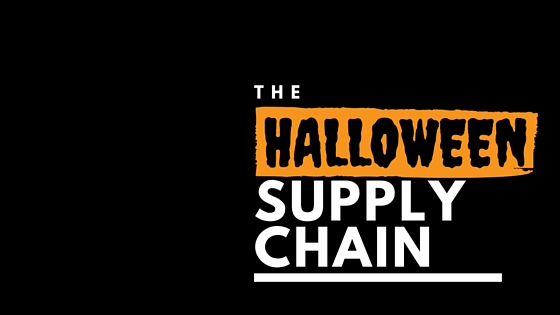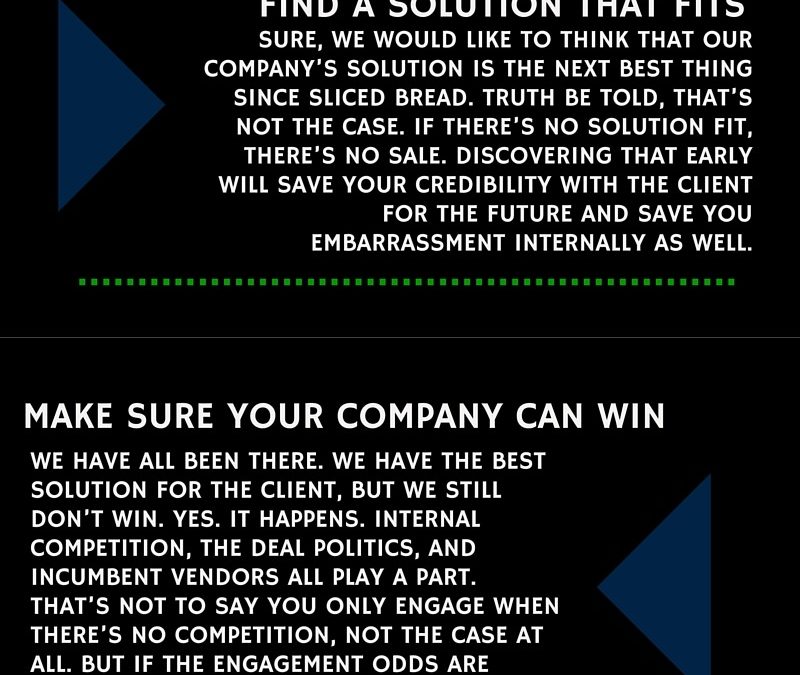
by Fronetics | Oct 20, 2015 | Blog, Leadership, Logistics, Strategy, Supply Chain, Talent

It’s common to think of the people who work for a company as “employees”, but reframing language and thinking could be critical to your supply chain. Start considering your employees as “talent”. The word employee has the connotation of working for someone or under someone. It implies being one of many, whereas the word talent has a positive connotation, implying that a person has depth, value, and potential. The term talent empowers both employees and companies to be the best and seek the best in their work and their search for other skilled people.
Reframing is an important step, but it doesn’t fix common problems that plague supply chain managers and human resource departments. It’s important to think about hiring processes as a long undertaking that extends beyond an ad, job interview, and offer letter. Companies should always be thinking about retention and promotion. This is called succession planning.
According to a study conducted by supply chain management researchers at Auburn University and Central Michigan University, 37.5% of surveyed companies had no engagement in succession planning, 27% had just started to work on planning, 23% engaged in informal planning, while only 12.5% engaged in formal succession planning.
Acquire
The supply chain is notorious for having a dearth of talent. The area is growing and more talent will need to be acquired for businesses to compete. As job titles expand and shift, due to the rapid changes in supply chain management and technological requirements, many people won’t be qualified for their own job title. Looking towards universities who are teaching supply chain management, and looking to other business sectors could be critical to find the right, flexible kind of talent the supply chain will need. Considering women for these traditionally male-dominant roles will also be important as women tend to be strong in many of the soft skills needed for the future of SCM. According to Shanton J. Wilcox, vice president, North America, and lead for logistics and fulfillment at Capgemini, “many so-called tactical jobs will be replaced by positions requiring more interpersonal and relationship management skills.”
Develop
As more and more money floods into the supply chain, it will be important to avoid the Silicon Valley problem of poaching, or talent leaving for larger and larger salaries elsewhere. Investing in current employees in a meaningful, attentive way, could make all the difference. Think about their future and next steps within your company. They probably have a plan for their future, and you should as well. Make sure those plans align and be open to assisting their journey to meet their goals.
Instead of conducting exit interviews, try conducting “stay” interviews. Ask specific questions about what it takes to create the environment that would help encourage your talents’ best performance. Ask what works, and also ask what doesn’t work. Be specific and ask what causes your talent anxiety or stress. You may find a trend and be able to fix it before people leave, rather than after. Investment is a big part of development. It helps talent feel like part of a bigger picture. If you invest in them they will invest in you.
Advance
Consider talent from within. According to a Forbes article, many companies are getting it wrong in trying to hire from outside. Internal candidates may not seem as appealing or exciting as the unknown, external candidate, but companies need to be clear-minded in these decisions. “Internal successors are in many ways lower risk than outsiders, yet surprisingly few promotions are awarded internally. That appears to be because boards often prefer the devil they don’t know to the devil they do. Also, some find it difficult to imagine someone at the top after seeing him operate in a lesser role for years.”
Internal talent may not appear to be ready for the next level if the position they’re seeking is a promotion, whereas an external candidate going for the same job may be making a lateral move and appear more “ready”. One thing to consider is the knowledge the internal candidate holds and brings to the job. Getting external talent up to speed can take months if not years.
Don’t sit back and assume your employees are willing to be passive about their careers. See your employees as assets. Have a strategy. Be part of their team, and make them part of yours. See their talent and invest in them, otherwise they’ll find another supply chain company who will.
You may also like:
Fronetics Strategic Advisors is a leading management consulting firm. Our firm works with companies to identify and execute strategies for growth and value creation.
We advise and work with companies on their most critical issues and opportunities: strategy, marketing, organization, talent acquisition, performance management, and M&A support.

by Fronetics | Oct 19, 2015 | Blog, Strategy, Supply Chain

It seems to me that Halloween merchandise is on display in stores and online earlier and earlier every year. A spokesperson for the National Retail Federation (NRF) last month confirmed this when she pointed to a spike in consumer Halloween spending in recent years. Halloween, she says, has been on the upswing in recent years in terms of the number of people celebrating and what they’re spending. And retailers have certainly taken notice. In 2014 consumers spent an average of $77 on Halloween candy, costumes and decorations – the highest amount ever recorded. While an estimated four million adults will don the ever-classic witch costume on Halloween this year, it seems like they’ll be spending less to do so; the NRF is predicting the average family will spend $27.33 on costumes, down slightly from 2014. Total spending in 2015 though is still predicted to top $6.9 billion. Check out our infographic below to see how the Halloween supply chain delivers the tricks and treats.


by Fronetics | Oct 15, 2015 | Blog, Consumer Electronics, Logistics, Marketing, Social Media, Strategy, Supply Chain

Consumers are using social media to help them make purchase decisions. An infographic by Invesp provides key details including that:
- 4 in 10 social media users have purchased an item online or in-store after sharing it or marking it as a favorite on Twitter, Facebook or Pinterest.
- 50% of those purchases take place within a week; 80% take place within 3 weeks.
- 71% of consumers are more likely to make a purchase based on social media referrals.
- Twitter is the most influential for tech purchases, and the least influential for gardening and decor.
- The top 2 ways Twitter helps solidify purchase decisions are: purchase location identification and product discovery.
A Consumer Electronics Association (CEA) study found similar results. CEA found that 24 percent of consumers who use social media say that they always or almost always refer to social media websites before they make a consumer electronics purchase. For high engagement users (13.5 or more hours per week) this increases to 65 percent.
Here’s how companies can use this information to reduce returns.
Inform
Use social media to give consumers the basic facts about your company and your product.
Educate
Use social media to educate consumers about your product. Specifically, social media can be used to educate the consumer about how the product can be used, the benefits that can be realized by the use of the product, and the ROI of the product.
Engage
Use social media to engage with consumers.
If a consumer is considering the product, use social media to answer questions the consumer has, or to address concerns. Similarly, if the customer has already purchased your product, you can use social media to answer questions the consumer has, or to address concerns.
Through the use of social media you can enable consumers to make more informed purchase decisions. Additionally, you can use social media to answer questions and better educate consumers on how to use your product thereby reduce no fault found returns.
This was originally published on Electronics Purchasing Strategies.

by Fronetics | Oct 14, 2015 | Blog, Marketing, Social Media, Strategy, Supply Chain

A study conducted by Accenture found that supply chain risk management is seen by companies as a priority. Seventy-six percent of companies who participated in the survey described supply chain risk management as important or very important, and 25 percent of respondents reported that they are planning to make increased investments of at least 20 percent in supply chain risk management in the next two years.
Social media is one place where an investment should be made.
Social media is not just for kids. Social media is not just for socializing. Social media is a business tool that can play an important role in supply chain risk management. Here are three reasons why your company should invest in social media.
News in real time
Social media is the new “newswire.” It has supplanted the AP, Dow Jones, and Bloomberg for breaking news. The earthquake in China, the Boston Marathon bombing, the death of Obama bin Laden, and the engagement of Prince William to Kate Middleton were all stories that broke on Twitter. Stories that played out over social media include the horsemeat scandal and Apple’s China supply chain sage.
When it comes to supply chain risk management, knowing what is happening in real time is vital. Whether it is learning about an earthquake that happened near your manufacturing facility, or monitoring the path and intensity of a hurricane – real time information will enable your company to make more informed and timelier decisions on how to manage or mitigate risk.
Identify emerging risks
In addition to providing timely information on events such as natural disasters and terror attacks, social media is a tool that can be used to identify additional risks to your company and supply chain. Specifically, social media can be used to identify risks such as weak links in your supply chain, missteps made by a supply chain partner, and customer concerns/dissatisfaction.
Managing and mitigate risks
A survey found that 89 percent of consumers began doing business with a competitor following a poor customer experience. The survey also found that 50 percent of consumers give a brand only one week to respond to a question before they stop doing business with them.
Social media is a great tool to provide customers with a great customer experience – fast. By engaging a dissatisfied customer over social media, listening to their concerns and addressing them – you are more likely to retain that customer and gain more customers. As the adage goes: “It is less expensive to retain a current customer than attain a new customer.”
Additionally, because social media allows for information to be distributed to a large number of people instantaneously, it is an effective tool for letting customers and partners know you are on top of an issue, or for altering them of an upcoming disruption.
When it comes to supply chain risk management communication and information is vital – social media is an effective tool to add to your company’s risk management toolkit. Get your company off the social media starting line.
This was previously published on Electronics Purchasing Strategies.

by Elizabeth Hines | Oct 12, 2015 | Blog, Logistics, Strategy, Supply Chain

There are organizations that sell products and there are organizations that sell solutions. To be sure, both can be successful as long as products are being sold as products and solutions like solutions. The difference is that the product sale is really a commodity sale. Commodities come with an “each” price or a “per pound” pricing matrix, etc. It usually is a short or shortened sales cycle and negotiations revolve around the total price and your typical supplier performance metrics. The solution sale is much different. This sale is one that requires client discovery, isolation of unique client pain points (that only your solution can address effectively), and being able to drive distinct value for the client, and in turn, for your organization. This sales effort is highly specialized and requires selling time (sales cycle) that is much more detailed than a product sale. That being the case, you need to be sure that your close rates are high enough to justify the work load and sales cycle needed. You also need to be sure that the deals you close have a deal size that reflect the sales effort and cycle time (said another way, is the deal worth winning?)
If your sales team thrives on creating value for their customers far beyond ‘supplying’ their ‘product’ at the best price, check out our other solution selling tips below.

Fronetics Strategic Advisors is a leading management consulting firm. Our firm works with companies to identify and execute strategies for growth and value creation.
We advise and work with companies on their most critical issues and opportunities: strategy, marketing, organization, talent acquisition, performance management, and M&A support.
We have deep expertise and a proven track record in a broad range of industries including: supply chain, real estate, software, and logistics.

by Fronetics | Oct 6, 2015 | Blog, Marketing, Social Media, Strategy, Supply Chain

Companies within the logistics and supply chain industries have been slower to participate in social media than other industries. The primary reason being because of a lack of understanding of what social media is and the role it can play for business. Unfortunately, companies who do not participate in social media miss out on opportunities – and revenue.
Every day conversations are taking place about your company, your products and services, your industry, and your competitors. These conversations are not just happening over the water cooler, they are happening on social media. These conversations not only provide invaluable (and often strategic) information, they also serve to shape and define your company and your brand. With the advent of social media, the reality is that is the customer who drives your company’s image and brand message. If your company isn’t on social media you miss out.
Social listening
Social listening is the process of monitoring social media to identify and assess what is being said about a company, individual, brand, product, or service. Through social listening your company can not only become an innovation engine, you can also gain market intelligence, and you gain intelligence about how your company, products, and services are being perceived. Knowing this information in real-time is invaluable.
Caterpillar is one company that has embraced social listening. Caterpillar engages in social listening with the objectives of gaining deeper insight into:
- Who is talking about the company;
- What is being said about the company;
- What competitors are doing;
- Key influencers;
- The tone of conversations that are taking place.
Kevin Espinosa, Caterpillar’s eBusiness Loyalty Manager, further discusses the company’s social listening strategy and the benefits of social listening:
“If you haven’t started already, you have to start with social listening. It’s like building a large campus without the sidewalks. Let your audience lay down the paths and sidewalks they want to take. They’ll tell you where they’re participating and what they need. Then you can backfill with a strategy that addresses their needs. This is the push aspect of social media. Eventually, you get to the pull aspect, where the customer is a big contributor to your social media strategy. This is where there is truly two-way dialogue and relationship building.”
Engagement and action
To reap the benefits of social listening, including increasing your revenue, you need to use the information and intelligence gathered. For example, if you learn via social media that your customers are experiencing issues with a specific product, take steps to determine what the issues are, and then make changes to the product. The Aberdeen Group offers additional examples of how social listening has been and can be used: “companies can use the voice of the customer to make critical adjustments and find issues related to inventory allocation, order management, returns management, cost, overall service satisfaction and beyond.”
The opportunities the supply chain and logistics industries can realize through social listening are great. Not participating in social listening results in missed opportunities.
This post originally appeared on Electronics Purchasing Strategies.










